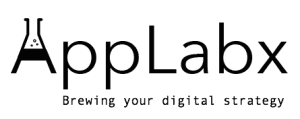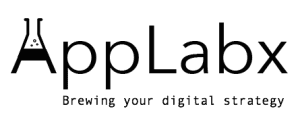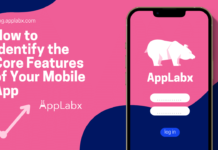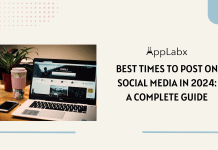Key Takeaways
- Consistent, keyword-optimised Shopify blog content can significantly boost organic traffic and search rankings.
- Strategic internal linking and content promotion amplify your blog’s visibility and conversion potential.
- Measuring SEO performance helps refine your blogging strategy for long-term growth and ROI.
In today’s ultra-competitive eCommerce landscape, simply setting up a Shopify store with great products and eye-catching design is no longer enough to guarantee consistent traffic or sales. With thousands of new online stores launching every day, the ability to stand out on search engines like Google has become more vital than ever. For Shopify merchants looking to achieve sustainable growth, blogging is not just a marketing tactic—it’s a powerful SEO weapon that can drive long-term visibility, attract qualified traffic, and ultimately increase conversions.

Despite its importance, blogging is often an underutilized feature within the Shopify ecosystem. Many store owners mistakenly assume that SEO is limited to product pages, collections, and technical tweaks. While these areas are critical, what often gets overlooked is the role that a high-quality, strategically optimized blog can play in dominating search rankings. A well-maintained blog not only helps target long-tail keywords and answer user queries, but it also signals to search engines that your site is active, authoritative, and relevant—three key factors that influence organic rankings.
Shopify, at its core, is built to be SEO-friendly. It allows you to create content-rich blog posts directly within your store, making it easy to blend product promotions with informative articles that address your audience’s needs. However, simply publishing random content is not enough. To truly leverage Shopify blogs for explosive SEO growth, you need a structured approach—one that combines keyword research, content strategy, technical optimization, and consistent publishing. This is how successful eCommerce brands generate tens of thousands of organic visits every month, build thought leadership in their niche, and cultivate an engaged community of repeat customers.
Moreover, the digital buying journey has evolved significantly in recent years. Shoppers now conduct extensive research before making purchases, often starting their journey by searching questions, comparisons, or tutorials on Google. This is where Shopify blogs become immensely powerful. By publishing blog content that targets different stages of the customer journey—from awareness to consideration to decision—you can attract users who aren’t ready to buy just yet but are actively searching for information. When they find that information on your blog, you’ve already won half the battle by earning their trust and positioning your brand as a solution provider.
Incorporating an SEO-first content marketing strategy through your Shopify blog also opens the door to additional traffic channels. High-ranking blog posts can be shared across social media platforms, linked to in newsletters, and cited by other websites—all of which contribute to higher domain authority and broader digital reach. Additionally, evergreen blog content can continue driving organic traffic for months or even years after being published, creating a compounding ROI effect that no paid ad campaign can match.
This comprehensive guide will walk you through everything you need to know to turn your Shopify blog into a traffic-generating machine. From setting up your blog properly to uncovering profitable keywords, optimizing on-page SEO, building a content calendar, and measuring results—we’ll cover every step in detail. Whether you’re just getting started or looking to take your existing content strategy to the next level, this blog will equip you with the tools, techniques, and best practices to unlock the full SEO potential of your Shopify store.
Now is the time to stop treating your blog as an afterthought and start using it as a core pillar of your eCommerce growth strategy. Let’s dive into how you can make Shopify blogging your most valuable SEO asset.
But, before we venture further, we like to share who we are and what we do.
About AppLabx
From developing a solid marketing plan to creating compelling content, optimizing for search engines, leveraging social media, and utilizing paid advertising, AppLabx offers a comprehensive suite of digital marketing services designed to drive growth and profitability for your business.
AppLabx is well known for helping companies and startups use SEO to drive web traffic to their websites and web apps.
At AppLabx, we understand that no two businesses are alike. That’s why we take a personalized approach to every project, working closely with our clients to understand their unique needs and goals, and developing customized strategies to help them achieve success.
If you need a digital consultation, then send in an inquiry here.
How to Leverage Shopify Blogs for Explosive SEO Growth
- Why Shopify Blogging Is Crucial for SEO Success
- Setting Up a High-Performing Shopify Blog
- Keyword Research for Shopify Blogs
- Creating SEO-Optimised Blog Content
- Building a Content Calendar That Drives Consistency
- Leveraging Internal and External Linking for SEO Boost
- Promoting Your Shopify Blog for Maximum Reach
- Measuring the SEO Impact of Your Shopify Blog
- Common Mistakes to Avoid with Shopify Blogging
1. Why Shopify Blogging Is Crucial for SEO Success
In the ever-evolving world of eCommerce, Shopify blogs remain one of the most underutilized assets for organic growth. When used strategically, a blog can significantly enhance a store’s visibility on search engines, build topical authority, and drive sustainable, long-term traffic. Here’s a deep dive into why blogging on Shopify is vital for SEO success.
Builds Topical Authority in Your Niche
Search Engines Prefer Niche-Relevant, Fresh Content
- Google ranks websites higher when they consistently publish in-depth content around specific topics.
- A Shopify blog allows you to demonstrate expertise around your niche—be it eco-friendly fashion, pet care, or fitness equipment.
Blogging Helps You Dominate Semantic Search
- Publishing supporting content around core themes builds keyword clusters.
- This creates a “content moat” that boosts your store’s visibility for a wide range of related search terms.
Example:
A store selling yoga mats can publish related blog content like:
- “10 Benefits of Practicing Yoga Daily”
- “Best Yoga Mat Materials for Hot Yoga”
- “How to Clean and Maintain Your Yoga Mat”
Over time, this builds authority for terms like “yoga accessories” and “best yoga gear”.
Targets Informational Keywords That Drive Discovery
Informational Content Captures Early-Stage Buyers
- Most shoppers begin their journey by searching for solutions, not products.
- Blogs help you attract users who are in the awareness or consideration stages.
Keyword Types and Blog Examples
| Keyword Type | User Intent | Example Blog Title |
|---|---|---|
| How-To | Learn how to do something | “How to Choose the Perfect Coffee Grinder for Home Use” |
| Comparison | Compare options | “French Press vs. AeroPress: Which Should You Buy?” |
| Listicle | Explore multiple solutions | “Top 10 Must-Have Kitchen Gadgets in 2025” |
| Guide | Deep-dive educational content | “Beginner’s Guide to Building a Capsule Wardrobe” |
| FAQ-based | Answer common questions | “Is Stainless Steel Cookware Oven-Safe?” |
Boosts Organic Traffic Without Paid Ads
Compounding ROI from Evergreen Content
- Unlike ads that stop driving traffic once the budget ends, evergreen blogs continue to rank and attract visitors over time.
- High-quality blog posts can generate thousands of monthly organic visits long after being published.
Example: Organic Traffic Growth from Shopify Blog
Case Study Snapshot
| Blog Title | Monthly Organic Traffic | Ranking Keywords | Time Since Published |
|---|---|---|---|
| “How to Style White Sneakers in Winter” | 4,800 | 120+ | 7 months |
| “5 Best Supplements for Muscle Recovery” | 6,300 | 150+ | 9 months |
Improves Internal Linking and User Journey
Guide Visitors from Blog to Product Pages
- Shopify blogs can drive traffic to high-intent pages via contextual internal links.
- Helps pass SEO equity (link juice) from ranking blog posts to lower-performing product pages.
Best Practices
- Use anchor texts that include relevant keywords.
- Link to collections, product pages, and other related blogs.
Example:
- In a blog titled “Best Running Shoes for Flat Feet,” link directly to your flat-foot running shoe collection.
Increases Indexed Pages and Crawl Depth
More Pages = More Entry Points for Google
- Each blog post acts as a new indexed page that can be discovered by Google.
- More indexed content gives Google more context about your domain, increasing site authority.
Comparison Table: Shopify Blog vs. No Blog Strategy
| Metric | Shopify Store with Blog | Shopify Store without Blog |
|---|---|---|
| Indexed Pages | 300+ | <100 |
| Average Monthly Organic Visitors | 10,000+ | 1,500 |
| Average Time on Site | 3.5 mins | 1.2 mins |
| Internal Link Opportunities | High | Low |
Supports Voice Search and Featured Snippets
Blogs Rank for Long-Tail Queries
- Well-structured blog content with clear H2s and bullet points can rank in featured snippets.
- This increases brand visibility and click-through rates.
Optimise for Voice Search
- Use conversational language and question-based headers.
- Answer questions succinctly in the first 100 words.
Example:
- Query: “What’s the best material for gym wear?”
- Your blog: “Polyester is the most commonly used material in gym wear due to its moisture-wicking properties and durability.”
Encourages Backlink Opportunities
Blogs Are Linkable Assets
- Educational and value-driven content is more likely to earn backlinks than product pages.
- This improves your domain authority and boosts rankings across your entire site.
Types of Blog Posts That Attract Backlinks
- Industry statistics and research
- Step-by-step tutorials
- In-depth product comparisons
- Ultimate guides
Example:
- A blog titled “The Complete Guide to Organic Skincare in 2025” can earn links from health blogs, influencers, and forums.
Conclusion: Blogging Is Non-Negotiable for Shopify SEO
Whether you’re running a niche product store or a general lifestyle brand, blogging gives your Shopify site the edge it needs to succeed in search. It bridges the gap between product discovery and purchase, supports multiple stages of the buyer’s journey, and creates a content ecosystem that fuels long-term organic growth.
When executed properly, Shopify blogs not only enhance SEO performance but also improve brand trust, increase dwell time, and generate more revenue without relying on paid ads.
2. Setting Up a High-Performing Shopify Blog
To leverage Shopify blogs for explosive SEO growth, your foundation must be technically sound and strategically structured. A high-performing blog isn’t just about writing—it’s about optimizing every aspect of the platform for usability, discoverability, and scalability. This section provides a comprehensive breakdown of how to set up a Shopify blog that supports both SEO and user experience from day one.
Choose a Blog-Friendly Shopify Theme
Your theme impacts how your blog is displayed, crawled by search engines, and experienced by users.
Key Features of a Blog-Optimized Shopify Theme
- Mobile-responsive design for improved UX and SEO
- Fast loading speeds with lightweight code
- Clear H1-H6 header hierarchy
- Built-in breadcrumb navigation
- Support for featured blog images and summaries
- Easy customization of meta fields
Recommended Shopify Themes for Blogging
| Theme Name | Best For | Blog-Specific Features | Price |
|---|---|---|---|
| Turbo by Out of the Sandbox | High-performance stores | Speed optimization, robust layout control | $350+ |
| Debut | Beginners | Clean layout, mobile-optimized | Free |
| Prestige | Premium fashion & lifestyle | Elegant blog styling, large hero images | $320 |
| Impulse | Versatile content strategy | SEO-friendly codebase, multiple blog sections | $320 |
Configure the Shopify Blog Structure for SEO
A strong structural foundation ensures your blog is indexable, readable, and logically categorized.
Set Up Clean Blog URLs
- Default URL structure:
/blogs/news/blog-post-title - Best practice:
- Keep URLs short, keyword-rich, and descriptive
- Avoid stop words like “the”, “and”, “with”
Example:
Avoid: /blogs/news/the-best-coffee-beans-you-can-buy-today
Use: /blogs/news/best-coffee-beans-2025
Use Categories (Tags) Effectively
- Use tags to organize posts by topic (e.g., “coffee guides”, “espresso recipes”)
- Limit each post to 3–5 relevant tags
- Avoid duplicate tag names (e.g., “How To” and “how-to”)
Enable Pagination and Navigation
- Break long blog archives into pages for better crawlability
- Use breadcrumb navigation for internal linking and UX
Optimize Technical SEO Settings
These foundational tweaks ensure your blog is correctly indexed and ranked.
Meta Titles and Descriptions
- Write custom meta titles for each post:
- Include primary keyword
- Keep under 60 characters
- Meta descriptions should:
- Be under 160 characters
- Include a call-to-action or value proposition
Example:
- Title: “Best Matcha Tea Powder in 2025 – Buyer’s Guide”
- Meta Description: “Explore the top matcha tea powders of 2025. Discover our expert picks and what to look for when buying premium matcha.”
Image Optimization
- Use descriptive filenames:
matcha-tea-powder.jpg - Add alt text with relevant keywords
- Compress images for faster loading using tools like TinyPNG
Implement a Scalable Internal Linking Framework
A high-performing blog naturally guides users toward product and collection pages.
Internal Linking Tactics
- Add links to related products within content (text or CTA buttons)
- Link to cornerstone articles for SEO authority
- Use consistent anchor texts with variations of target keywords
Linking Matrix Example
| Blog Post | Links To Product Page | Links To Collection Page | Links To Other Blogs |
|---|---|---|---|
| “Top 5 Organic Hair Oils” | Organic Hair Oil #1 | Hair Oils Collection | “Benefits of Argan Oil for Hair” |
| “How to Choose a Hair Conditioner” | Coconut Conditioner Product | Conditioners Collection | “Best Natural Shampoos for 2025” |
Create a Blog Content Template for Consistency
Uniformity improves UX and makes your content easier to crawl and rank.
Elements to Include in Each Blog Post
- Featured Image (with alt text)
- Meta Title and Description
- Introduction with target keyword in first 100 words
- H2 and H3 Subheadings with keyword variations
- Internal links to products, collections, and related blogs
- External links to authoritative sources (if relevant)
- Conclusion with CTA or product promotion
Example Layout Template
Title: How to Brew the Perfect Cup of Cold Brew Coffee
Meta Description: Master cold brew coffee at home with this step-by-step guide.
Image: cold-brew-setup.jpg (alt: how to brew cold brew coffee)
[Introduction]
H2: What Is Cold Brew Coffee?
H2: Step-by-Step Cold Brew Recipe
- Bullet instructions
- Tips and tools
- Internal link to cold brew equipment
H2: Cold Brew vs Iced Coffee
[Conclusion]
CTA: Shop Our Cold Brew Starter Kit
Integrate SEO Tools and Analytics
To build a high-performing blog, you need continuous measurement and refinement.
Essential SEO Tools for Shopify Blogs
- Yoast SEO for Shopify – for on-page SEO optimization
- Plug In SEO – to audit technical and content SEO issues
- Google Search Console – track keyword rankings and indexing
- Google Analytics 4 – monitor traffic, bounce rates, and engagement
SEO KPI Tracker Example
| Metric | Target | Tracked Tool |
|---|---|---|
| Organic Blog Traffic | +20% MoM | Google Analytics |
| Average Time on Page | > 2 minutes | Google Analytics |
| Indexed Pages | 100+ | Google Search Console |
| CTR from Search Results | > 3% | Google Search Console |
| Internal Links per Post | Minimum 3 | Manual Review or Screaming Frog |
Conclusion: Lay the Groundwork for Long-Term SEO Wins
Setting up a high-performing Shopify blog requires more than activating the “blog” section—it demands a technically optimized structure, consistent format, and data-driven planning. By investing upfront in a proper theme, SEO-friendly settings, internal linking, and analytic tracking, you create a blog that not only ranks well but also converts readers into customers.
The better your setup, the more scalable and profitable your blogging strategy becomes.
3. Keyword Research for Shopify Blogs
Keyword research is the cornerstone of any successful Shopify blogging strategy. Without understanding what your audience is searching for, even the most beautifully written posts will fail to drive traffic or conversions. Effective keyword research for Shopify blogs ensures that each article aligns with actual search demand, buyer intent, and SEO opportunities. This section breaks down a comprehensive, step-by-step approach to uncovering, validating, and mapping keywords for explosive blog growth.
Understand Search Intent to Target the Right Audience
Before diving into tools, it’s essential to understand why users search and what kind of content satisfies their queries.
Types of Search Intent
| Intent Type | Purpose | Example Keywords | Best Blog Format |
|---|---|---|---|
| Informational | Learn something | “how to clean leather shoes” | How-to guides, tutorials, checklists |
| Navigational | Find a specific brand/site | “Nike running blog” | Branded blog posts |
| Transactional | Ready to buy | “best gaming chair under $200” | Product roundups, buyer’s guides |
| Commercial Investigation | Compare before buying | “AirPods vs Galaxy Buds review” | Comparisons, reviews, expert breakdowns |
Match Blog Topics to Buyer Journey
- Top of Funnel (ToFu): Informational content to attract wide audiences
Example: “How to Create a Minimalist Wardrobe” - Middle of Funnel (MoFu): Educational + commercial topics to build trust
Example: “Best Fabrics for Sustainable Clothing” - Bottom of Funnel (BoFu): Product-oriented content to convert readers
Example: “Top 5 Vegan Leather Wallets Reviewed”
Use Keyword Research Tools Strategically
Multiple tools can help uncover keyword opportunities based on volume, difficulty, and intent.
Top Keyword Research Tools for Shopify Blogs
| Tool | Use Case | Free/Paid |
|---|---|---|
| Google Search Console | Analyze existing keyword performance | Free |
| Ahrefs | Keyword difficulty, competitor analysis | Paid |
| Ubersuggest | Long-tail keyword discovery | Freemium |
| AnswerThePublic | Find question-based search queries | Freemium |
| Semrush | In-depth keyword analytics | Paid |
| Google Trends | Check keyword seasonality and trends | Free |
Find High-Value Keyword Opportunities
Once tools are selected, the next step is to identify keywords that have:
- Reasonable monthly search volume
- Low to medium competition
- Strong commercial or informational intent
- Relevance to your products and audience
High-Value Keyword Characteristics
- Long-tail (3+ words)
- Low keyword difficulty (KD < 35 for new blogs)
- Buyer-aligned (reflect user problems or solutions)
Example: Keyword Selection Table
| Seed Topic | Suggested Long-Tail Keyword | Search Volume | Keyword Difficulty | Intent |
|---|---|---|---|---|
| Organic skincare | “best organic moisturizers for dry skin” | 2,300 | 27 | Commercial |
| Minimalist fashion | “how to start a minimalist wardrobe” | 1,500 | 22 | Informational |
| Coffee accessories | “best grinder for French press coffee” | 1,000 | 31 | Commercial |
Analyze Competitors’ Blog Keywords
Studying competitor blogs can reveal gaps or opportunities you can rank for.
Steps to Analyze Competitor Keywords
- Identify 3–5 leading Shopify stores or niche blogs
- Use Ahrefs or Semrush to input their blog URLs
- Filter by:
- Keywords they rank for
- Position (Top 10)
- KD < 40
- Blog subdirectory (e.g.,
/blogs/news/)
Example: Competitor Keyword Insights Matrix
| Competitor | Blog URL | Top Blog Keyword | Volume | Your Opportunity |
|---|---|---|---|---|
| Minimalist Goods | /blogs/journal | “best capsule wardrobe brands” | 1,300 | Write a roundup post |
| BrewMaster Coffee Co. | /blogs/brew-basics | “how to grind coffee beans” | 2,000 | Create a guide with visuals |
Map Keywords to Blog Topics and Content Types
Keyword mapping ensures each keyword supports a specific blog topic, avoiding duplication and cannibalization.
Keyword Mapping Template Example
| Target Keyword | Suggested Blog Title | Content Type | Linked Product/Collection |
|---|---|---|---|
| “how to style white sneakers” | “7 Ways to Style White Sneakers in 2025” | How-to / Listicle | White Sneakers Collection |
| “best reusable water bottles 2025” | “Top 10 Reusable Water Bottles for Every Lifestyle” | Product Roundup | Sustainable Drinkware Collection |
| “vegan skincare routine steps” | “Your Daily Vegan Skincare Routine: Step-by-Step” | Educational Guide | Vegan Skincare Line |
Track Keyword Rankings and Blog Performance
Ongoing tracking helps refine your strategy and double down on what works.
Metrics to Track
| Metric | Tool | What It Shows |
|---|---|---|
| Organic Keyword Rankings | Ahrefs, Semrush | Keyword position and movement over time |
| Click-Through Rate (CTR) | Google Search Console | How compelling your meta titles are |
| Top Queries by Page | Google Search Console | Keywords driving traffic to individual blogs |
| Bounce Rate & Time on Page | Google Analytics 4 | Engagement quality and content relevance |
Example: Monthly Blog Keyword Tracking Sheet
| Blog Post Title | Primary Keyword | Current Position | Monthly Traffic | Notes |
|---|---|---|---|---|
| “Ultimate Guide to Skincare Layering” | skincare layering routine | 5 | 2,100 | Update for 2025 trends |
| “Best Compostable Packaging for Ecommerce” | compostable ecommerce packaging | 12 | 750 | Needs more backlinks |
| “How to Wear Linen Shirts in Winter” | linen shirt winter styling | 3 | 1,400 | Strong performer; create video |
Conclusion: Keyword Research Is the Engine of Shopify SEO
Keyword research transforms your Shopify blog from a passive content hub into a traffic-generating, authority-building asset. By understanding search intent, using the right tools, and strategically mapping keywords to high-quality content, you ensure every blog post serves a purpose—attracting the right readers and guiding them toward conversion.
4. Creating SEO-Optimised Blog Content
Creating SEO-optimised blog content for your Shopify store is the key to transforming organic search traffic into high-intent shoppers. Great content does more than just inform—it ranks, attracts, engages, and ultimately converts. This section provides a detailed, strategic framework to help you craft long-form, SEO-rich blog posts that are optimized for both search engines and user experience.
Craft Compelling, Keyword-Focused Blog Titles
Your blog title is the first thing users see in search results and on-page.
Best Practices for Blog Titles
- Include the primary keyword as close to the beginning as possible
- Use numbers or power words to boost CTR
- Keep it under 60 characters to avoid truncation in SERPs
- Match search intent (informational, commercial, etc.)
Examples of SEO Blog Titles
| Topic | Primary Keyword | Optimised Blog Title |
|---|---|---|
| Vegan skincare | vegan skincare routine | “Vegan Skincare Routine: A Step-by-Step Beginner’s Guide” |
| Reusable drinkware | best reusable water bottles | “10 Best Reusable Water Bottles for 2025 (Buyer’s Guide)” |
| Capsule wardrobes | how to start a capsule wardrobe | “How to Start a Capsule Wardrobe: Minimalist Fashion Tips” |
Use Structured Headings to Enhance Readability and SEO
Proper heading structure improves both crawlability and user experience.
Heading Tag Hierarchy
- Use H1 for the blog title (only once per post)
- Use H2 for main sections
- Use H3-H6 for sub-sections or supporting points
Example Heading Structure for a Blog Post
H1: 10 Best Organic Face Moisturizers for Sensitive Skin
H2: What to Look for in an Organic Moisturizer
H3: Ingredient Quality
H3: Skin Type Compatibility
H2: Our Top Picks for 2025
H3: Brand A – Soothing Aloe Moisturizer
H3: Brand B – Vegan Hydration Cream
H2: FAQs About Organic Skincare
Write Engaging Introductions with Primary Keywords
Your introduction should hook the reader while signaling relevance to search engines.
Introduction Tips
- Include the primary keyword within the first 100 words
- Highlight the benefit of reading the post
- Keep it under 150 words for best readability
- Include a question or surprising stat to draw interest
Example Introduction for a Blog Post:
Looking for the best reusable water bottles in 2025? Whether you’re into fitness, travel, or eco-friendly living, this guide covers the top-rated, leak-proof, and sustainable bottles to suit every lifestyle. Here’s what you need to know before buying.
Incorporate Primary and Secondary Keywords Naturally
Keyword placement is essential, but keyword stuffing must be avoided.
Where to Place Keywords
- Blog title (H1)
- Meta title and description
- First paragraph
- At least one H2 or H3
- Image alt tags
- Anchor text for internal/external links
- URL slug
Keyword Placement Matrix
| Keyword Type | Example | Placement |
|---|---|---|
| Primary Keyword | “minimalist wardrobe guide” | Title, H1, intro, URL, image alt tag |
| Secondary Keyword | “capsule wardrobe checklist” | H2, paragraph text, meta description |
| Semantic Variations | “minimalist fashion tips” | Body text, anchor link text |
Use Short Paragraphs and Bullet Lists for Readability
Content readability affects both SEO (through engagement metrics) and conversion.
Formatting Guidelines
- Paragraphs: 2–4 lines max
- Sentences: 20 words or fewer when possible
- Use bullet points for:
- Feature lists
- Comparisons
- Step-by-step instructions
Example: Comparison Section
Top Features to Look for in a Reusable Bottle:
- BPA-free material
- Double-walled insulation
- Leak-proof lids
- Size options (12oz to 32oz)
- Easy-to-clean design
Integrate Internal and External Links Strategically
Links help search engines crawl your site and pass authority.
Internal Linking Best Practices
- Link to product pages, collections, and related blog posts
- Use descriptive anchor text (avoid “click here”)
- Keep links relevant to the topic
External Linking Tips
- Link to authoritative sites (.gov, .edu, niche leaders)
- Use nofollow if the site is not trustworthy
- Limit to 2–3 external links per post
Example:
Learn more in our Complete Guide to Sustainable Packaging, or explore our Zero Waste Starter Kit.
Optimise Meta Titles and Descriptions for Higher CTR
The meta title and description are crucial for SERP visibility.
Meta Title Formula
[Primary Keyword] + Benefit or Modifier + Brand (if needed)
Meta Description Tips
- Keep under 160 characters
- Include a call-to-action
- Use primary and secondary keywords
Example Meta Data:
- Meta Title: “Best Cold Brew Coffee Makers of 2025 – Expert Picks”
- Meta Description: “Explore the top-rated cold brew makers for home use. Discover our expert reviews and shop your favorite today.”
Add SEO-Optimised Images and Media
Images improve time-on-page and can drive traffic through image search.
Image Optimisation Checklist
- Use descriptive file names (e.g.,
cold-brew-coffee-kit.jpg) - Add alt text that describes the image and includes keywords
- Compress images to reduce load time
- Use JPEG or WebP formats for fast loading
- Include infographics or comparison charts where useful
Example: Blog Image Table
| Image Name | Alt Text | Post Topic |
|---|---|---|
| coffee-brewing-kit.jpg | “Best coffee brewing kit for home” | Coffee accessories blog post |
| linen-shirt-winter.jpg | “How to wear linen shirts in winter” | Seasonal fashion styling guide |
| eco-packaging-chart.png | “Eco-friendly packaging comparison” | Sustainable eCommerce packaging post |
Add a Clear Call-to-Action (CTA)
Guide your readers to take the next step after reading.
Effective CTA Types
- “Shop the collection”
- “Download our free checklist”
- “Read the full buyer’s guide”
- “Subscribe for weekly updates”
Example CTA Placement:
Ready to upgrade your skincare routine? Explore Our Vegan Skincare Collection.
Monitor and Refresh Content Regularly
Google rewards freshness, especially in competitive niches.
Content Update Checklist
- Recheck keyword rankings quarterly
- Refresh stats, links, product mentions annually
- Add FAQs based on Search Console queries
- Expand word count if competitors have longer posts
Example: Blog Refresh Matrix
| Blog Post | Last Updated | Needs Refresh? | Action |
|---|---|---|---|
| “Best Indoor Plants for Small Spaces” | Jan 2023 | Yes | Add 2025 plant trends + new images |
| “How to Choose an Eco Toothbrush” | Mar 2025 | No | Monitor rankings |
| “Cold Brew Coffee Tips” | Oct 2022 | Yes | Update brewing gear recommendations |
Conclusion: Blog Content Built for SEO Longevity
Creating SEO-optimised blog content is both an art and a science. By focusing on keyword placement, content structure, meta data, and user engagement signals, you build blog posts that rank and convert. Combined with high-quality images, internal linking, and regular updates, your Shopify blog becomes a sustainable engine of growth.
5. Building a Content Calendar That Drives Consistency
A well-structured content calendar is essential for turning your Shopify blog into a reliable, scalable SEO asset. By planning content strategically, you avoid gaps, reduce duplication, ensure alignment with marketing goals, and build topical authority over time. Consistency is what separates average blogs from high-performing SEO machines.
This section outlines how to create, implement, and optimise a Shopify blog content calendar that aligns with SEO goals and brand priorities.
Why a Content Calendar Matters for Shopify SEO
A content calendar provides structure, accountability, and strategic clarity. It also helps scale your content efforts with efficiency.
Benefits of Using a Content Calendar
- Aligns blog topics with keyword strategy and seasonal trends
- Helps maintain a regular publishing frequency (important for SEO)
- Enables planning around promotions, product launches, and holidays
- Ensures keyword diversity and topical depth
- Tracks performance over time
Set Clear Content Goals and KPIs
Before creating the calendar, establish your goals so every post serves a purpose.
Examples of Content Goals
- Drive organic traffic to product pages
- Rank for long-tail informational keywords
- Support category or collection SEO
- Build backlinks through valuable resources
- Educate and nurture prospects
Sample KPIs to Track
| Goal | Key Performance Indicator (KPI) |
|---|---|
| Boost organic traffic | Monthly blog sessions from organic search |
| Improve keyword rankings | SERP position for target keywords |
| Increase engagement | Average time on page, bounce rate |
| Generate leads or conversions | Newsletter signups, add-to-cart actions |
| Build topical authority | Number of internal/external backlinks |
Define Your Target Publishing Frequency
Consistency is more important than volume. Choose a frequency that your team can sustain over time.
Publishing Frequency Matrix
| Team Size / Resources | Recommended Frequency |
|---|---|
| Solo founder or freelancer | 2 posts per month |
| Small in-house team | 1 post per week |
| Medium content team | 2–3 posts per week |
| Enterprise / Agency-backed | 4–5 posts per week or more |
Example Content Types to Vary
- How-to guides
- Listicles
- Product roundups
- Industry trend posts
- Case studies or customer stories
- Comparison articles
Map Content to Buyer Journey and Keyword Strategy
Ensure your calendar supports users across different stages of the customer journey.
Content Type by Funnel Stage
| Funnel Stage | Content Type | Example Topic |
|---|---|---|
| Awareness (Top) | How-tos, checklists, guides | “How to Build a Capsule Wardrobe for Summer” |
| Consideration (Middle) | Comparison posts, FAQs, buying guides | “Best Linen vs Cotton Shirts for Travel” |
| Decision (Bottom) | Product-focused posts, reviews, case studies | “Why Our Vegan Wallet Is a Best-Seller in 2025” |
Create a Keyword-Aligned Monthly Content Plan
Use a spreadsheet, Notion, Trello, or Airtable to map keywords, formats, deadlines, and goals.
Sample Monthly Content Calendar (SEO-Focused)
| Week | Blog Title | Primary Keyword | Goal | Internal Link Target | Status |
|---|---|---|---|---|---|
| Week 1 | “How to Style Chunky Sneakers in 2025” | style chunky sneakers | Drive fashion blog traffic | Chunky Sneakers Collection Page | Published |
| Week 2 | “Top 7 Organic Skincare Ingredients Explained” | organic skincare ingredients | Build topical authority | Organic Skincare Products | Drafting |
| Week 3 | “Best Eco-Friendly Office Supplies” | eco-friendly office supplies | Support sustainability segment | Stationery Collection | Scheduled |
| Week 4 | “Linen vs Hemp Clothing: What’s Better?” | linen vs hemp clothing | Capture comparison traffic | Summer Wardrobe Collection | Idea Stage |
Integrate Promotional and Seasonal Campaigns
Align your content calendar with product launches, holidays, and peak sales periods.
Seasonal & Event-Based Content Examples
| Season / Event | Blog Topic Idea | Ideal Publishing Month |
|---|---|---|
| Back to School | “Best Reusable Lunch Containers for School Kids” | August |
| Black Friday | “Top 10 Eco Gifts to Grab This Black Friday” | Early November |
| Earth Day | “How to Make Your Closet More Sustainable in 5 Steps” | Late March |
| Summer Fashion | “Lightweight Wardrobe Essentials for Hot Weather” | May |
Use Content Pillars and Clusters to Build Topical Authority
Organise content thematically to enhance internal linking and SEO structure.
Content Pillar Example: Sustainable Fashion
| Pillar Page | Sustainable Fashion Guide |
|---|---|
| Cluster Blog Post 1 | “How to Build a Capsule Wardrobe with Eco Brands” |
| Cluster Blog Post 2 | “Organic Cotton vs Bamboo: Which is Better?” |
| Cluster Blog Post 3 | “Sustainable Fashion Mistakes to Avoid” |
| Cluster Blog Post 4 | “Top 10 Slow Fashion Brands in 2025” |
- Each post internally links back to the main pillar
- Builds topical relevance and keyword depth
- Supports long-term search visibility
Assign Responsibilities and Set Deadlines
Clarity ensures accountability across your team or content freelancers.
Content Calendar Team Role Matrix
| Role | Responsibility |
|---|---|
| Content Strategist | Defines topics, aligns with SEO strategy |
| Content Writer | Writes the article with SEO best practices |
| SEO Specialist | Reviews on-page SEO elements before publishing |
| Designer | Provides feature images or infographics |
| Editor | Proofreads and ensures tone and grammar consistency |
| Publisher | Uploads and schedules content on Shopify CMS |
Tools to Manage and Automate Your Content Calendar
Several platforms can streamline planning and coordination.
Recommended Tools
| Tool | Purpose | Notes |
|---|---|---|
| Trello | Visual Kanban-style planning | Great for solo or small teams |
| Asana | Task assignment and deadlines | Ideal for larger teams with recurring tasks |
| Notion | All-in-one calendar and database | Flexible and customisable |
| Airtable | Spreadsheet-style content tracking | Powerful filtering and collaboration |
| Google Sheets | Lightweight, shareable solution | Easy to start with, universally accessible |
Review and Optimise Monthly
A static calendar is not sustainable. Use performance data to optimise.
Metrics to Monitor for Content Calendar ROI
- Blog post views and unique visits
- Keyword rankings (Ahrefs, GSC)
- Engagement: bounce rate, scroll depth, time on page
- Conversions: newsletter signups, add-to-cart actions
- Publishing frequency and missed deadlines
Example: Monthly Content Calendar Performance Report
| Month | Planned Posts | Published Posts | Top Performer | Traffic Gained | Conversion Goal Met |
|---|---|---|---|---|---|
| January | 4 | 4 | “How to Build a Capsule Wardrobe” | 1,500 organic visits | Yes |
| February | 4 | 3 | “Eco Office Supplies Review” | 820 organic visits | No |
| March | 4 | 4 | “Linen vs Hemp Clothing” | 1,200 organic visits | Yes |
Conclusion: A Content Calendar Is Your SEO Growth Engine
Building and maintaining a Shopify content calendar helps scale your SEO efforts with clarity and consistency. When each post is aligned with keyword strategy, buyer intent, seasonal trends, and product goals, your content becomes a true growth lever. Use calendar insights to double down on what works and refine what doesn’t.
6. Leveraging Internal and External Linking for SEO Boost
Internal and external linking are fundamental SEO strategies that enhance crawlability, authority distribution, and relevance—factors that directly affect how Shopify blogs rank in search results. When executed with precision, a smart linking strategy improves user experience, strengthens site architecture, and amplifies topical authority, all of which are crucial for organic growth.
This section dives deep into how Shopify merchants and content marketers can effectively leverage both internal and external links to improve search engine rankings, increase time-on-site, and drive more qualified traffic.
Understanding the Role of Links in SEO
Internal Links
Internal links connect one page to another within the same domain. They:
- Help distribute page authority (link equity) across the site
- Enable search engine bots to discover and index content efficiently
- Create semantic relationships between topics
- Improve UX by guiding visitors to relevant content
External Links
External links (or outbound links) point to reputable domains outside your own. They:
- Build content credibility and trust
- Provide additional value to users
- Signal topic relevance to search engines
- Improve ranking when linked to authoritative and contextually relevant sources
Strategic Internal Linking for Shopify Blogs
Best Practices
- Use descriptive anchor text
- Avoid generic phrases like “click here”
- Example: Use “our vegan leather backpacks” instead of “read more”
- Link to high-converting pages
- Product pages, collection pages, and seasonal offers should be primary targets
- Place links early in the content
- Links placed in the first 100–150 words typically receive more clicks and crawl attention
- Ensure topic relevance
- Link to blog posts and pages that cover similar themes or user intent
Example Internal Linking Map
| Source Blog | Anchor Text | Target Page |
|---|---|---|
| “Top 10 Summer Fashion Essentials” | breathable cotton tank tops | Cotton Tank Tops Product Page |
| “How to Organise Your Eco Closet” | eco-friendly wardrobe solutions | Sustainable Fashion Collection |
| “Benefits of Bamboo Fabric” | our guide on organic fabric types | “Cotton vs Bamboo: Which is Better?” Blog |
| “Reusable vs Disposable Kitchen Products” | zero-waste kitchen accessories | Kitchen Sustainability Collection Page |
Internal Linking Structure: Siloing and Clustering
Using content silos and clusters helps organise your internal linking and improves topical authority.
Siloing Model
| Silo Topic | Supporting Pages |
|---|---|
| Eco-Friendly Fashion | “Why Choose Organic Cotton” |
| “Best Ethical Brands in 2025”
| “Guide to Sustainable Materials” |
| Zero-Waste Lifestyle | “Zero-Waste Bathroom Setup”
| “Reusable Household Swaps”
| “Compostable vs Biodegradable Products” |
- Each blog links back to the main silo page
- Increases contextual relevance and link juice flow
Visual Example: Silo Structure Chart
Main Category Page
│
├── Supporting Blog Post 1
│
├── Supporting Blog Post 2
│
└── Supporting Blog Post 3
Each supporting blog post links back to the main category or pillar page and to one another when relevant.
Strategic External Linking for Shopify Blogs
Best Practices
- Link to high-authority domains
- Prefer sources like .edu, .gov, industry leaders, and niche experts
- Link sparingly and purposefully
- Too many outbound links may dilute content focus and distract users
- Ensure topical relevance
- Link to content that supports your argument, backs up data, or expands value
Examples of Quality External Linking
| Blog Topic | External Link Anchor | Linked Domain | Purpose |
|---|---|---|---|
| “Benefits of Using Organic Skincare” | study by EWG | ewg.org | Back up health claims with trusted data |
| “How to Start a Capsule Wardrobe” | minimalist fashion guide | theminimalists.com | Support topic authority |
| “Composting 101 for Beginners” | home composting best practices | EPA.gov | Refer to authoritative environmental advice |
| “Top Eco Cleaning Brands” | eco-certification standards | ecocert.com | Provide validation from industry standards |
Link Placement & Frequency Optimization
Link Placement Priority
| Placement | SEO Effectiveness | Why It Matters |
|---|---|---|
| First 100 words | Very High | Quickly provides context to crawlers and readers |
| Subheadings & bullet lists | High | Natural for contextual anchors and UX scanning |
| Within body content | Moderate | Provides additional context and continuity |
| Footers or sidebars | Low | Often ignored by crawlers and considered boilerplate |
Optimal Number of Links Per 1000 Words
| Link Type | Recommended Range |
|---|---|
| Internal Links | 3–6 |
| External Links | 1–3 |
- Excessive linking may look spammy and reduce on-page SEO focus
- Use tools like SurferSEO or Frase to benchmark competitors’ link density
Using Tools to Audit and Improve Linking Strategy
Recommended Tools
| Tool | Function | Notes |
|---|---|---|
| Ahrefs Site Audit | Detect broken/missing internal links | Also helps track orphan pages and redirects |
| Screaming Frog | Internal link analysis | Visualises site structure and crawl depth |
| SEMrush | Backlink & internal linking audits | Tracks toxic external links as well |
| Link Whisper (Shopify plugin) | Smart internal linking suggestions | Automates link placement using AI |
Common Internal and External Linking Mistakes to Avoid
Internal Linking Mistakes
- Linking to non-relevant or low-value pages
- Using exact same anchor text for multiple pages (confuses SEO signals)
- Ignoring new pages and leaving them orphaned
- Not updating links after URL changes (results in broken links)
External Linking Mistakes
- Linking to competitors without strategic reason
- Linking to low-authority or spammy websites
- Using affiliate links without disclosure (trust issues, penalties)
- Overusing nofollow unnecessarily (limits value-passing opportunities)
Linking Strategy Comparison Matrix
| Criteria | Internal Linking | External Linking |
|---|---|---|
| Helps with crawlability | Yes | No |
| Builds site structure | Yes | No |
| Passes link equity | Yes | Yes (to external sites) |
| Enhances content value | Yes | Yes |
| Boosts topical authority | Yes | Indirectly |
| SEO risk factor | Low if well-managed | Medium if low-quality links used |
Conclusion: Links Are the SEO Glue of Shopify Blogs
Internal and external linking strategies are not just technical tasks—they’re strategic levers that directly influence how search engines interpret your Shopify blog’s content and relevance. When links are used intentionally and contextually, they create a web of trust, authority, and discoverability.
7. Promoting Your Shopify Blog for Maximum Reach
Creating high-quality content is just the first step. To harness the full SEO and traffic potential of your Shopify blog, strategic promotion is crucial. Without active promotion, even the most well-optimized content may remain invisible in a competitive digital landscape. This section outlines effective and sustainable strategies to promote Shopify blog content, combining organic methods, social media tactics, influencer outreach, and email marketing.
Understanding the Importance of Blog Promotion for SEO and Sales
Why Blog Promotion Matters
- Increases blog visibility and reach to targeted audiences
- Attracts backlinks that improve domain authority
- Drives referral traffic from multiple channels
- Signals to search engines that the content is relevant and active
- Supports brand recognition, lead generation, and conversions
Benefits of Effective Promotion
| Promotion Outcome | SEO Benefit | Business Impact |
|---|---|---|
| Increased Page Views | Higher engagement metrics | More chances for lead capture and conversions |
| Higher Dwell Time | Positive user signals to search engines | Improved SERP rankings |
| More Backlinks | Boosts domain and page authority | Enhances organic discoverability |
| Stronger Brand Presence | Wider recognition within your niche | Builds trust and customer loyalty |
Leveraging Social Media Channels
Social media is a powerful channel for distributing Shopify blog content to a wider, engaged audience.
Platform-Specific Tactics
- Facebook
- Share blog content in niche Facebook Groups (e.g., “Eco-Friendly Lifestyle” if your Shopify store is sustainability-focused)
- Use carousel or video teasers to attract attention
- Instagram
- Repurpose blog tips into carousel posts or Instagram Stories with “Read More” links in bio
- Collaborate with micro-influencers for story shoutouts
- LinkedIn
- Share B2B content on LinkedIn with industry tags
- Use LinkedIn Pulse to syndicate blog articles
- Twitter/X
- Post blog snippets as threaded tweets
- Use hashtags like #ShopifyTips, #eCommerceSEO, #BloggingForBusiness
Social Promotion Frequency Matrix
| Platform | Post Frequency | Best Time to Post | Content Format |
|---|---|---|---|
| 2–3 times/week | 12 PM – 3 PM (Wed–Fri) | Short caption + image/video | |
| Daily Stories, 3x feed posts/week | 9 AM – 11 AM & 6 PM – 8 PM | Carousel, Reels, Bio link | |
| 2–4 times/week | 8 AM – 10 AM (Tue–Thur) | Text + image or article link | |
| Twitter/X | 3–5 times/day | 9 AM – 3 PM (Weekdays) | Threads, quick tips, quotes |
Email Marketing: Re-Engage and Drive Repeat Traffic
Email is one of the most cost-effective ways to promote blog content directly to people who already show interest in your brand.
Email Campaign Ideas
- Weekly Blog Digest
- Recap the latest blog posts and link to full articles
- Drip Campaign Integration
- Add blog links into automated sequences for new subscribers
- Segmented Promotions
- Target specific user segments with relevant blog posts (e.g., skincare articles to customers who bought skincare items)
High-Converting Blog Newsletter Structure
| Section | Purpose | Example |
|---|---|---|
| Headline | Grab attention | “5 Eco Hacks That Save Money This Summer” |
| Opening line | Highlight the blog value | “Want to reduce waste and save cash?” |
| Preview content | Summarise blog in 2–3 bullet points | “- DIY kitchen hacks, – composting guide, etc.” |
| CTA Button | Direct to blog | “Read Full Article” or “Explore Tips” |
Influencer and Partner Outreach
Collaborating with niche influencers or complementary brands can significantly expand the reach of your blog.
Outreach Strategies
- Micro-influencer collaborations
- Ask influencers to reference or link your blog in their content
- Provide a unique coupon code or affiliate link for added value
- Guest blogging exchanges
- Write for other blogs and include links to your Shopify blog
- Invite guest bloggers with strong followings to post on your site
- Backlink outreach
- Identify blog articles that reference similar topics
- Pitch your blog as an additional valuable resource
Influencer Outreach Email Template
Subject: Love Your Content — Let’s Collaborate on a Blog Feature
Hi [Name],
I came across your recent post on [Topic] and loved your insight on [Detail]. I’ve just published a similar guide on our Shopify blog: [Title]. I believe your audience would find it equally valuable.
Would you be open to a collaboration or share?
Best,
[Your Name]
Using Paid Promotion to Amplify Blog Reach
Paid promotion offers instant visibility and targeted traffic, especially useful for new blogs or high-value content pieces.
Platforms and Strategies
- Facebook Ads
- Target interests and lookalike audiences relevant to your niche
- Google Display Ads
- Promote blog content on contextually related sites
- Pinterest Ads
- Especially effective for visual blog topics (e.g., home decor, fashion)
- Outbrain/Taboola
- Content recommendation platforms that drive blog visibility through native ads
Content Promotion ROI Table
| Platform | Avg CPC (USD) | Engagement Rate | Best for |
|---|---|---|---|
| Facebook Ads | $0.50 – $1.00 | High (if targeted) | Driving traffic to new blog articles |
| Pinterest Ads | $0.10 – $0.30 | Medium | Visual, lifestyle, how-to blog content |
| Google Display | $0.40 – $1.50 | Medium to High | Targeting users on relevant media sites |
| Outbrain/Taboola | $0.30 – $0.60 | High | Long-form blogs with click-worthy titles |
Repurposing Blog Content for Multi-Channel Distribution
Extend your blog’s life span and discoverability by repackaging the same content in multiple formats.
Repurposing Tactics
- Turn listicles into infographics or Pinterest pins
- Convert how-to guides into YouTube tutorials or Reels
- Use blog quotes to create LinkedIn graphics
- Turn case studies into PDF downloads or lead magnets
Content Repurposing Matrix
| Original Blog Type | Repurposed Format | Channel |
|---|---|---|
| “How-To Guide” | Instagram Carousel, Reel | Instagram, TikTok |
| “Top 10 List” | Infographic | Pinterest, LinkedIn |
| “In-depth Tutorial” | Video walkthrough | YouTube, IGTV |
| “Customer Case Study” | Downloadable PDF | Email Marketing, Landing Page |
Using Community Forums and Niche Platforms
Where to Share Blog Posts
- Reddit: Post in relevant subreddits like r/shopify, r/ecommerce, or r/femalefashionadvice
- Quora: Answer questions and link to your blog for further reading
- Product Hunt: If launching a new product, include blog content as supplementary material
- Medium: Republish articles for more exposure (use canonical tags to avoid duplicate content penalties)
Measuring Blog Promotion Performance
Tracking KPIs is essential to optimise future promotions.
Key Metrics to Track
| Metric | Tool | Insight Provided |
|---|---|---|
| Page Views | Google Analytics | Tracks which promotion source drives the most traffic |
| Referral Traffic | GA4, UTM Links | Measures specific campaigns (e.g., social vs email) |
| Bounce Rate | Google Analytics | Indicates quality of traffic and relevance |
| Backlinks Acquired | Ahrefs, SEMrush | Tracks link-building results from outreach efforts |
| Social Shares | BuzzSumo, SharedCount | Measures blog virality and social traction |
Conclusion: Distribute or Disappear
Creating excellent Shopify blog content is just 50% of the SEO equation. The remaining 50% lies in smart, consistent, and data-driven promotion. Leveraging a multi-channel strategy that includes social, email, influencers, ads, and communities ensures your blog content doesn’t just exist—it gets read, shared, and ranked.
8. Measuring the SEO Impact of Your Shopify Blog
Effectively measuring the SEO performance of your Shopify blog is critical for continuous growth and long-term success. Without proper tracking and analysis, it’s impossible to know which blog posts drive the most organic traffic, which keywords perform best, and what areas need optimization. This section will walk you through the essential KPIs, analytics tools, and reporting strategies needed to assess and enhance your blog’s SEO effectiveness.
Why Measuring SEO Matters for Shopify Blogs
Benefits of SEO Measurement
- Helps identify high-performing blog content
- Reveals underperforming areas that require content updates or technical fixes
- Provides data for content planning and keyword targeting
- Validates ROI from content marketing initiatives
- Supports scalable, long-term SEO strategy
Common SEO Challenges Without Measurement
| Challenge | Impact on Shopify Blog SEO |
|---|---|
| Posting without keyword tracking | Content may not align with search intent |
| No engagement metrics | Can’t optimize for bounce rate or dwell time |
| No backlink tracking | Missed opportunities for link-building |
| Lack of traffic source insights | Ineffective promotion channels |
Key SEO Metrics to Track for Shopify Blogs
Core Performance Metrics
- Organic Traffic
- Measures the number of users visiting from search engines
- Track trends over time using Google Analytics or Shopify reports
- Keyword Rankings
- Observe where your blog ranks for target keywords
- Use tools like Ahrefs, SEMrush, or Ubersuggest
- Bounce Rate & Dwell Time
- High bounce rate signals poor UX or irrelevant content
- Dwell time indicates how engaging your blog content is
- Backlinks
- Shows how many external websites link to your content
- Directly correlates with improved domain authority
- Click-Through Rate (CTR)
- Measures how well your meta titles and descriptions drive clicks
- Available in Google Search Console
SEO Metrics Matrix
| Metric | Tool to Use | Why It Matters |
|---|---|---|
| Organic Traffic | Google Analytics, Shopify | Measures real SEO growth over time |
| Keyword Positions | Ahrefs, SEMrush, Ubersuggest | Tracks search engine visibility |
| CTR | Google Search Console | Indicates effectiveness of metadata |
| Backlinks | Ahrefs, Moz, Majestic | Shows link-building success and content trust |
| Dwell Time | GA4 | Reveals engagement and content quality |
Using Google Search Console for Blog Insights
Google Search Console (GSC) is one of the most powerful free tools to track your blog’s organic performance.
How to Use GSC
- Go to the “Performance” tab to:
- View total clicks, impressions, CTR, and average position
- Filter data by blog URLs to isolate blog-specific performance
- Use “Queries” report to:
- Discover which keywords your blog ranks for
- Identify queries generating impressions but low clicks
- Check the “Pages” report to:
- Analyze top-performing blog posts by clicks and impressions
Example Use Case
- If your blog “How to Style Vintage T-Shirts” has:
- 50,000 impressions but only 400 clicks
- CTR = 0.8% (very low)
- You should revise your meta title and description to make it more compelling
Using Google Analytics 4 (GA4) to Analyze Blog Performance
GA4 offers powerful features for monitoring user behavior on your blog.
How to Set It Up for Blog Tracking
- Create content groups or track blog URLs via custom dimensions
- Use UTM parameters to track traffic from email and social campaigns
Key Reports to Check
- Pages and Screens Report
- Shows most visited blog pages and their engagement
- Engagement Metrics
- Average engagement time per post
- Scroll depth tracking (requires setup)
- Traffic Sources
- Understand which channels drive the most visits to your blog
Example GA4 Dashboard
| Metric | Blog Post A | Blog Post B | Blog Post C |
|---|---|---|---|
| Pageviews | 3,200 | 1,700 | 950 |
| Avg. Engagement Time | 3:45 | 1:58 | 0:42 |
| Bounce Rate | 32% | 45% | 68% |
| Conversions (Signups) | 120 | 45 | 5 |
Monitoring Backlinks and Domain Authority
Link-building plays a crucial role in blog SEO, and tracking your backlink profile is essential.
Tools for Backlink Analysis
- Ahrefs: Backlink profile, referring domains, anchor text
- Moz Link Explorer: Domain authority, spam score
- SEMrush: Toxic links, lost/new backlinks
Key Metrics to Track
- Number of referring domains
- Quality and authority of linking sites
- Anchor text distribution
- Follow vs. nofollow link ratios
Sample Backlink Profile Report
| URL | Referring Domains | DA of Link Source | Anchor Text |
|---|---|---|---|
| /blog/shopify-seo-tips | 30 | 85 (shopify.com) | “Shopify SEO tips” |
| /blog/email-marketing-ecommerce | 12 | 62 (mailchimp.com) | “Email marketing advice” |
| /blog/how-to-start-a-dropshipping-store | 45 | 70 (oberlo.com) | “Dropshipping guide” |
Tracking Conversions from Blog Content
Driving traffic is valuable, but measuring how that traffic converts is more important.
Conversions to Track
- Newsletter signups from blog CTAs
- Product page visits originating from blog links
- Purchases or add-to-carts tracked via goal setup
- Ebook downloads or lead magnet submissions
Example Conversion Funnel
| Step | Metric Tracked | Example Value |
|---|---|---|
| Blog Visit | Sessions from /blog/seo-guide | 3,000 |
| CTA Click (Signup Form) | Button click event | 500 |
| Email Signups Completed | Goal completion | 300 |
| Product Page Visit | Pageview triggered by link | 150 |
| Product Purchase | Conversion event | 45 |
Benchmarking and Setting SEO Goals
Without benchmarks and goals, SEO performance lacks direction.
Setting SMART SEO Goals
- Specific: Increase blog traffic from organic by 30% in 3 months
- Measurable: Use GA4 to track blog-only traffic sources
- Achievable: Based on past trends and competitor analysis
- Relevant: Focused on top blog categories (e.g., fashion, skincare)
- Time-bound: Set targets for 30, 60, and 90 days
Sample Goal Matrix
| Goal Type | Metric | Current | Goal | Timeline |
|---|---|---|---|---|
| Traffic Growth | Organic Pageviews | 10,000 | 13,000 | 3 months |
| Keyword Visibility | Top 10 Rankings | 15 keywords | 25 | 60 days |
| Link Acquisition | Referring Domains | 100 | 130 | 90 days |
| Conversions from Blogs | Email Signups | 800/month | 1,200 | 30 days |
Regular Reporting and Optimization
Tracking SEO is a continuous process, not a one-time task.
Best Practices for Reporting
- Create a monthly blog SEO dashboard using tools like:
- Google Data Studio (Looker Studio)
- Ahrefs Reports
- Google Analytics Dashboards
- Highlight:
- Top-performing blog posts
- Blog posts losing traffic
- Keywords rising/falling in rankings
- Content needing updates or repurposing
Optimization Ideas Based on Reports
- Update blog metadata for posts with high impressions but low CTR
- Add internal links to underperforming but high-potential blogs
- Republish and refresh outdated content with new data and keywords
Conclusion: Let Data Drive Your Blog Strategy
Measuring the SEO impact of your Shopify blog allows you to transform raw data into meaningful insights that fuel traffic, rankings, and conversions. By continuously monitoring the right metrics, using the best tools, and making data-backed decisions, you ensure your blog remains a powerful asset in your Shopify store’s growth engine. The more you measure, the smarter and more scalable your content marketing becomes.
9. Common Mistakes to Avoid with Shopify Blogging
Even the best intentions in Shopify blogging can fall short if common SEO and content strategy mistakes are not recognized and addressed. Many store owners invest time in publishing blog posts, but without the right execution, these efforts can lead to low traffic, poor rankings, and missed revenue opportunities. This section outlines the most frequent pitfalls that Shopify users encounter when running a blog—and how to avoid them.
Ignoring Keyword Research
Why This Is a Problem
- Without proper keyword targeting, content fails to match search intent
- Traffic potential remains untapped, even for well-written blogs
- Difficult to compete with optimized content from other eCommerce stores
Examples of Mistakes
- Writing blog posts based on assumptions instead of data
- Targeting keywords with extremely high competition
- Ignoring long-tail and buyer-intent keywords
Solutions
- Use tools like Ahrefs, SEMrush, and Google Keyword Planner
- Focus on low-competition, high-conversion keywords
- Analyze what competitors are ranking for in your niche
Keyword Mistake Matrix
| Mistake | Impact | Fix |
|---|---|---|
| No keyword research | Posts miss organic search traffic | Use keyword tools before writing |
| Targeting only short-tail keywords | High competition, low conversion | Include long-tail and question-based terms |
| Ignoring search intent | High bounce rates, low engagement | Align content with user needs and queries |
Not Optimizing On-Page SEO
Critical On-Page SEO Mistakes
- Skipping meta titles and descriptions
- Not using proper header tags (H1, H2, H3)
- Keyword stuffing or over-optimization
- Ignoring image alt text
Examples
- A blog titled “Best T-Shirts for Summer” uses no H2 headings and lacks a meta description
- Images are uploaded as “image1.png” without alt tags
Best Practices
- Always include a target keyword in the title, URL, and at least one subheading
- Use semantic keywords and synonyms to avoid keyword stuffing
- Add alt text with relevant descriptors for all visuals
On-Page SEO Checklist Table
| Element | Common Mistake | Correct Practice |
|---|---|---|
| Meta Title | Missing or generic title | Include primary keyword and brand value |
| Meta Description | Not written or overstuffed | Write compelling summaries under 160 chars |
| Header Structure | Only H1 used or misused tags | Use H1 once; follow with H2 and H3 as needed |
| Image Optimization | No alt tags, large file sizes | Add descriptive alt text; compress files |
Publishing Inconsistently
Why Inconsistency Hurts SEO
- Reduces crawl frequency by search engines
- Weakens audience trust and loyalty
- Makes it harder to build authority in a niche
Common Scenarios
- Posting 5 blogs in one week, then none for three months
- Publishing only during sales seasons
How to Fix
- Create a content calendar to plan and space out posts
- Use scheduling tools or apps like Buffer or Shopify Flow
- Repurpose long-form content into smaller, regular updates
Content Frequency Impact Chart
| Blogging Frequency | SEO Performance Impact |
|---|---|
| Once a week (consistent) | Builds authority, better ranking stability |
| Irregular (spikes + gaps) | Low trust from search engines |
| Monthly or less | Slow SEO growth, low user retention |
Neglecting Internal Linking
Why It Matters
- Internal links help distribute link equity
- Guide users to related content and product pages
- Improves crawlability and user experience
Mistakes to Avoid
- No links to product or collection pages
- No interlinking between relevant blog posts
- Overuse of the same anchor text
Examples
- A post on “Men’s Summer Outfits” doesn’t link to the “Men’s Clothing” collection
- Using “click here” repeatedly instead of descriptive anchor text
Correct Linking Strategy
- Link every blog to at least 1–3 product or category pages
- Use varied and relevant anchor texts
- Add contextual links to related blog posts
Overlooking Mobile Optimization
Why This Is Critical
- Over 70% of Shopify traffic comes from mobile users
- Mobile experience is now a core ranking factor for Google
Common Mobile Issues
- Blog content is difficult to read on small screens
- Images do not resize correctly (non-responsive)
- Slow mobile page load times
Fixes
- Use responsive themes like Dawn or Impulse
- Compress images using TinyPNG or Shopify image settings
- Use Shopify Speed Score to monitor performance
Failing to Measure SEO Results
Consequences
- No data to guide future blogging strategy
- Can’t determine ROI from blogging efforts
- Missed opportunities for content improvement
Typical Mistakes
- Not connecting Google Analytics or Search Console
- No tracking of keyword rankings or engagement metrics
- Ignoring conversion funnels from blog to purchase
Tools to Use
- Google Analytics 4 (GA4)
- Google Search Console
- Ahrefs, SEMrush, Moz for keyword and backlink tracking
Not Promoting Blog Content
Why Promotion Is Necessary
- SEO takes time—promotion drives initial traffic
- Increases chances of earning backlinks and social shares
- Builds brand visibility beyond organic search
Promotion Mistakes
- Relying solely on SEO to generate traffic
- Not sharing blogs on social media or email lists
- No outreach to influencers or niche communities
Effective Promotion Tactics
- Share posts on Instagram, Facebook, Pinterest with visuals
- Send to subscribers through Shopify Email or Mailchimp
- Repurpose blogs into video, carousel, or story content
Promotion Channel Effectiveness Table
| Channel | Effectiveness (1–5) | Best Use Case |
|---|---|---|
| Organic SEO | 5 | Long-term traffic, evergreen posts |
| Social Media | 4 | Fast reach, visuals-heavy topics |
| Email Marketing | 4 | Promoting new content, building loyalty |
| Influencer Outreach | 3 | Niche content promotion |
| Paid Ads | 2 | Boosting pillar content or special campaigns |
Creating Blog Content That’s Too Sales-Focused
Why This Backfires
- Readers can spot overly promotional content and lose trust
- Content lacks depth and fails to rank
- Low dwell time and high bounce rate
Examples
- A blog titled “Why Our Shirts Are the Best” focuses only on product features
- No educational or problem-solving angle
Better Approach
- Educate first, sell later
- Use the blog to solve a problem, then recommend products
- Example: Write a blog on “How to Choose the Right Shirt Fabric for Summer” and subtly link to your lightweight cotton collection
Conclusion: Avoiding Mistakes Leads to Scalable SEO Growth
By identifying and correcting these common Shopify blogging mistakes, merchants can unlock the full SEO potential of their content. Each misstep avoided is a step toward higher visibility, more qualified traffic, and better conversions. Smart blogging is about more than just publishing content—it’s about strategic execution that aligns with SEO best practices and user needs. Continuously audit your approach, and evolve your blogging strategy to stay ahead in Shopify’s competitive landscape.
Conclusion
Shopify blogs are far more than a digital diary or a platform for occasional updates—they are powerful SEO engines capable of transforming organic visibility, driving sustained traffic, and elevating conversion rates. When properly strategized, structured, and scaled, Shopify blogging can become a cornerstone of long-term eCommerce growth.
The Strategic Role of Shopify Blogs in SEO
Blogging on Shopify isn’t merely about publishing articles—it’s about creating a structured content ecosystem that aligns with your store’s overall SEO and marketing goals. Blogs offer the unique ability to:
- Target informational and long-tail search queries that product pages alone cannot capture
- Build internal link pathways that enhance crawlability and site structure
- Establish topical authority in your niche or vertical
- Serve as evergreen traffic drivers, ranking over time with compounding returns
Through keyword-rich, intent-driven content, your blog becomes the bridge between potential customers searching for solutions and your Shopify product offerings.
Recap of Key Shopify Blogging Strategies
To effectively leverage Shopify blogs for explosive SEO growth, the following components must work in harmony:
1. Keyword Research
- Use tools like Ahrefs, SEMrush, and Google Keyword Planner to identify low-competition, high-intent keywords
- Target long-tail keywords and niche-specific terms that map to every stage of the buyer’s journey
2. SEO-Optimised Content Creation
- Craft blog posts that are rich in structure, value, and relevance
- Incorporate H1-H3 headers, alt text, internal links, and schema markup
- Avoid fluff and focus on actionable, problem-solving content
3. Consistency Through Content Calendars
- Develop a quarterly or monthly content calendar to ensure regular publishing
- Align blog topics with seasonal trends, product launches, and search demand
4. Internal and External Linking
- Strategically interlink blogs with relevant product or category pages
- Link out to credible external resources to enhance authority and trust
5. Strategic Promotion
- Distribute your content across social media, email newsletters, and niche forums
- Repurpose blogs into videos, reels, or infographics to amplify reach
6. Measuring Results
- Monitor performance via Google Analytics, Google Search Console, and third-party SEO tools
- Track metrics like impressions, CTR, keyword rankings, bounce rates, and assisted conversions
Long-Term Impact of a Well-Executed Shopify Blog Strategy
A consistently updated and strategically structured Shopify blog can lead to:
| SEO Benefit | Description |
|---|---|
| Higher Organic Traffic | Blog posts help you rank for a broader set of keywords beyond just product-related searches |
| Improved User Engagement | Informative content keeps users longer, increasing dwell time and decreasing bounce rates |
| Stronger Domain Authority | Regular content output and link-building boost your overall site authority |
| Enhanced Brand Trust and Loyalty | Thought leadership and education foster credibility and long-term customer relationships |
| Revenue Growth from Content Funnels | Blogs can drive users into well-structured conversion paths to product or checkout pages |
Avoiding Pitfalls for Maximum Return
To truly capitalize on Shopify blogging:
- Avoid sporadic publishing, keyword stuffing, and sales-only content
- Optimize every post for both user value and technical SEO
- Treat your blog as a marketing asset, not just a support tool
Final Thoughts
In 2025 and beyond, the Shopify stores that stand out will be those that embrace content marketing not as a side project, but as a central growth strategy. Blogging, when done with precision, becomes a scalable channel for driving evergreen traffic, building customer relationships, and ranking higher across the funnel.
By implementing the strategies outlined in this guide, Shopify merchants can build a blog that doesn’t just inform—but converts, engages, and dominates in search. Whether you’re a startup or an established brand, the time to leverage Shopify blogs for explosive SEO growth is now.
If you are looking for a top-class digital marketer, then book a free consultation slot here.
If you find this article useful, why not share it with your friends and business partners, and also leave a nice comment below?
We, at the AppLabx Research Team, strive to bring the latest and most meaningful data, guides, and statistics to your doorstep.
To get access to top-quality guides, click over to the AppLabx Blog.
People also ask
What is the benefit of blogging on Shopify for SEO?
Blogging on Shopify helps target long-tail keywords, improves internal linking, and builds topical authority for better search engine rankings.
How often should I publish blogs on my Shopify store?
Publishing at least once a week can help maintain consistency and signal freshness to search engines.
Can Shopify blogs improve product page rankings?
Yes, strategic internal linking from blog posts to product pages can boost their SEO performance.
What type of content works best for Shopify blogs?
Informational, how-to guides, product comparisons, and listicles targeting buyer intent perform best.
How do I find keywords for my Shopify blog?
Use tools like Google Keyword Planner, Ahrefs, or Ubersuggest to find low-competition, high-intent keywords.
Should I use long-tail keywords in my Shopify blog posts?
Yes, long-tail keywords help capture niche traffic and are easier to rank for.
How important is internal linking in Shopify blog SEO?
Very important—internal links help distribute link equity and guide search crawlers through your site.
Can I use external links in Shopify blogs?
Yes, linking to reputable sources enhances trustworthiness and adds SEO value.
What should I include in a Shopify blog’s meta description?
Use your target keyword, a call-to-action, and a brief summary under 160 characters.
Is it necessary to add images to Shopify blog posts?
Yes, images improve user experience and engagement. Use alt text for better SEO.
How can I promote my Shopify blog posts?
Share them on social media, email newsletters, and repurpose content into videos or infographics.
Do Shopify blogs need a content calendar?
Yes, a content calendar ensures consistent posting and aligns with SEO goals.
Can I rank my Shopify blog on Google’s first page?
Yes, with optimized content, proper keyword targeting, and backlinks, it’s achievable.
Should I write blogs myself or hire a writer?
If you lack time or SEO knowledge, hiring an experienced content writer can be a smart investment.
How long should my Shopify blog posts be?
Aim for 1,000–2,000 words to cover topics thoroughly and improve ranking potential.
Is mobile optimization important for Shopify blogs?
Absolutely. Most traffic is mobile, and Google uses mobile-first indexing.
Can I include product links in Shopify blog posts?
Yes, linking to relevant products boosts SEO and encourages conversions.
What are some good blog ideas for Shopify?
Try customer stories, product tutorials, industry tips, and seasonal gift guides.
Should I use headings in my Shopify blog posts?
Yes, using H1, H2, and H3 tags improves readability and helps search engines understand structure.
How do I measure the success of my Shopify blog?
Track traffic, bounce rate, keyword rankings, and conversions via Google Analytics and Search Console.
Do tags and categories help with Shopify blog SEO?
Yes, they organize content and improve crawlability and user navigation.
Can I use blog content to build backlinks?
Yes, high-quality blog content can attract natural backlinks from other websites.
Is duplicate content bad for Shopify blogs?
Yes, avoid duplicate content to prevent ranking penalties and confusion for search engines.
What SEO apps can help with Shopify blogging?
Apps like Yoast, Plug in SEO, and Smart SEO assist with meta data, schema, and optimization.
Should I update old blog posts on Shopify?
Yes, updating content with new data and keywords can revive rankings and traffic.
How do I optimize Shopify blogs for featured snippets?
Use question-based headings, concise answers, and structured lists or tables.
Is voice search important for Shopify blog SEO?
Yes, optimizing for natural language queries can capture more voice search traffic.
Can Shopify blogs help with seasonal SEO trends?
Definitely—blog around holidays, trends, or events to capture timely search interest.
Should I enable comments on Shopify blogs?
Comments can boost engagement, but monitor them to avoid spam and maintain quality.
How many keywords should I target per blog post?
Focus on one primary keyword and a few secondary ones to avoid over-optimization.



































